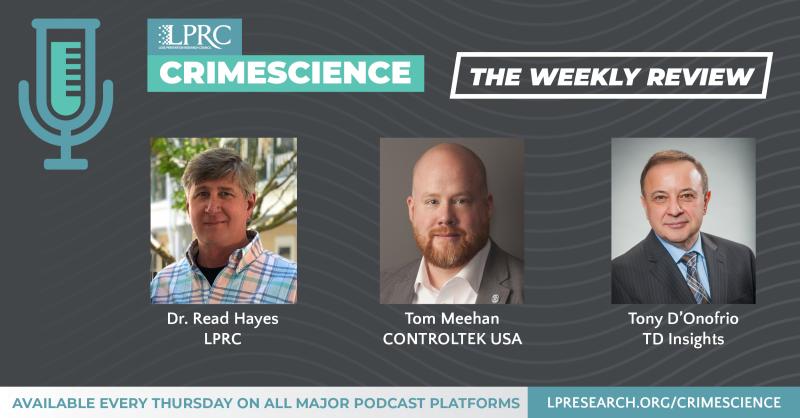Loss Prevention Research Council Weekly Series - Episode 38 - ORC 2020, Holiday Shopping Trends, Christmas Traditions
With Dr. Read Hayes, Tony D'Onofrio, and Tom Meehan

25-30 million Christmas trees are sold each year in the U.S. Retail sales increased by 9% last month. 35% of consumers shopped more this November versus last November. On this week’s episode, our co-hosts discuss these facts and much more, including the recent Russian state-sponsored hack, Interpol’s “Orange Notice”, COVID-19 vaccines logistics and IT challenges, NRF’s ORC report, BOPIS & curbside-pickup consumer ratings, and The Economist’s top trends for 2021.
USA Organized Retail Crime (ORC) 2020 Report NRF - Organized retail crime costs retailers $719,548 per $1 billion in sales in 2020, up from $703,320 in 2019. This is the fifth year in a row where the ORC figure has topped $700,000 and is up significantly from $493,940 in 2015.
The issue of ORC is continuing to grow. Among ORC victims, three in four report an increase in the past year. Retailers believe the increase in ORC incidents may be the result of changing laws and penalties for shoplifting. Many states have increased the threshhold of what constitutes a felony which had the unintended consequences of allowing criminals to steal more without being afraid of stronger penalties related to penalty charges.
Nearly 2/3 of retailers report that they have seen an increase in the average ORC case value in these states. The industry is still supportive of a federal ORC law. Over 6 in 10 believe ORC federal laws are needed to effectively combat the issue.
61% say their company is prioritizing ORC more than 5 years ago. 52% say company is allocating additional technoloy resources to address risk. 36% say their company is increasing its annual loss prevention budget.
Top 5 cities impacted by ORC: Los Angeles, Chicago, Miami, New York, and San Francisco. Top 5 stolen items by ORC gangs: designer clothes, laundry detergent, razors, designer handbags, and deodorant.
Bain & Company New Holiday 2020 Research - How shoppers are spending this holiday season.
With less spending on discretionary categories such as travel and restaurants, retail sales grew 9% in November. It's beginning to look a lot like a record holiday season. 35% did more holiday spending in November versus last year. 51% shopped Black Friday deals before the actual day.
Instore foot traffic declined, but store sales are still growing. Consumers shopped an average of 3 stores in November and made trips once a week, both down in 2019. Yet, they're spending 3% more in stores than last year, resulting in $264 billion dollars instore sales last month.
27% in grocery using BOPIS. 16% in non-grocery using BOPIS. 40% report making additional purchases when using BOPIS. 21% report making additional purchases when using curbside. BOPIS satisfaction stores 4 out of 5 stars. Curbside satisfacton score 4.3 out of 5 stars. Reasons for good scores: short wait times, affordable, and reliable.
How to delight customers in the new year: meet customers where they want, make BOPIS and curbside offerings more satisfying to customers, continue to prioritize safety, improve mobile and desktop browser experiences.
From the Economist, the ten trends to watch in 2021: fights over vaccines, a mixed economic recovery, patching the new world disorder, more USA-China tension, companies as the frontline on topics such as climate change and social justice, after the tech-celeration some clarity, a loss footloose tourism world, an opportunity for climate change, the year of deja vu or a second take on 2020, a wake up call to other risks.
From Mental Floss, the origins of our Christmas Traditions: hanging stockings, caroling, christmas trees, red and green, ugly Christmas sweater, cookies and milk for Santa, eggnog, mistletoe, first formal Christmas Card.
















